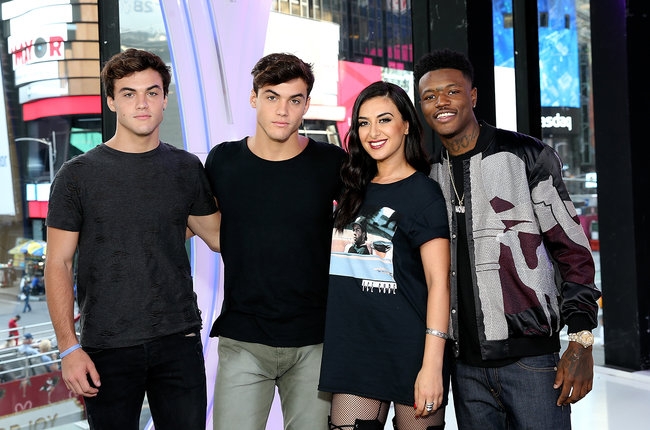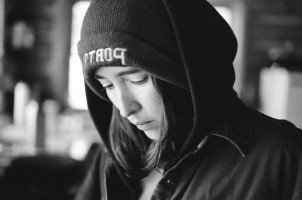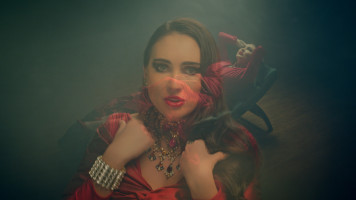After a nine-year break, MTV’s iconic countdown show Total Request Live returned. Though reviews were mixed, the show is responsible for an uptick in teen viewers for the network: the P12-17 rating for its first week was .13, creating an 89 percent gain compared to the network’s previous four weeks. It is responsible for a 93 percent bump in the P12-17 share compared to the previous four weeks.
Most impressive is how the show has updated for the digital world: since its Oct. 2 premiere, TRL has ranked in the top 10 most social shows every day -- occasionally besting the likes of Jimmy Kimmel Live! and The Tonight Show Starring Jimmy Fallon (according to Nielsen).
MTV president Chris McCarthy talked to Billboard about his “incredibly optimistic” outlook for TRL and the show’s messaging when it comes to social issues and its success with teens. “When it takes some of our talent and our guests over a hour-and-a-half to get out of Times Square because there’s so many screaming fans, it’s working,” he says.
Billbord: TRL premiered the day after the mass shooting in Las Vegas. Can you walk me through the process of finding the right tone for this premiere?
Chris McCarthy: We had that huge party planned, everybody was ready to go for one thing, and then Sunday night happened. You have an utter tragedy that strikes young people at their heart in a different way because so many of these mass killings have happened with young people and with music. We had to address it right at the top of the show.
It’s no different than the way young people are experiencing life. Their social feeds are giving them a combination of some of the best pop fun music that they love, and it’s this tragedy that hits right next to that in Vegas. That’s no different than their lives, their feeds, so that’s the perspective: to respect the audience and respect what happened and talk about it.
The reviews for the premiere were mixed. Can you speak to that?
From our perspective, our goal was to bring younger voices back, more music and drive video and social views. Our metric for success isn’t necessarily the critics’ reviews; it’s the audience. And from that perspective, we far exceeded the numbers. Up on the linear screen itself, we’re up almost 100 percent with teens and that’s just in week one. From our video views, so everything off-linear, we are up over 30 percent, which week-on-week, the last time we saw that kind of growth was the VMAs. And then in terms of social conversation and the audience’s passion for it, when you look at the Nielsen social guide, we’ve been in the top 10 almost every night. And that’s not just for daytime, that’s across all of television and all of broadcast and cable. So that’s beating out many of the existing daily shows, and that’s beating out some of the biggest primetime shows.
Our goal was actually to create a great show but not waste time and overly develop this. And when you look at episode one to episode five, it’s almost a different show, and that’s the awesome part about being live. You get to actually respond and change things every day. The team is in there thinking about, “How is the audience reacting? How does it feel? How does it look? How does the artist feel? Is it making the social noise? Is it driving the numbers?” You’re able to iterate that every day. Being live is a little scary, and that’s why really so very few people do it. It’s less than five shows a day do it, and it’s mainly the news shows. For us it’s exhilarating because it’s about being in culture in real time. The other thing I kind of just love, one of the first reviews of TRL in the original launch was from Time magazine, and they said, “TRL is killing pop music.” [Editor’s note: McCarthy is referencing an article from the Time issue dated December 20, 1999. The magazine included a feature titled “The Best Music of 1999” with a section called “And The Worst,” saying “TRL and its fawning host Carson Daly overplay bad teeny-pop videos and create an atmosphere that drives away viewers who might request more substantial fare. TRL is killing pop music.”]
So we need to be pushing things. We need to be changing culture. When you hear five, ten thousand screaming kids outside, you know something’s working. When it takes some of our talent and our guests over a hour-and-a-half to get out of Times Square because there’s so many screaming fans, it’s working.
You already had a themed week with “Tuition Request Live,” which speaks to the social messaging we’re seeing from MTV. Can you tell me more about that?
We saw a lot of this in millennials and we’re seeing so much more of it in Gen Z. They don’t see it as one as social, one as content, one as entertainment. To them it’s all one, so we’re weaving the messages that are important to them and raising awareness throughout the week. On Friday we had an awareness and celebration of Puerto Rico and the U.S. Virgin Islands and raised funds there. On Wednesday we talked about DACA and how important it was to drive our voice, and how young people feel about it, and the DREAMers. And tuition is a huge issue.
So rather than talk about these things from a negative perspective, like tuition, we want to talk about it from a celebratory perspective. And what better way to do that than actually see young people’s dreams and give away free tuition? We had so many artists that were excited about that. Pitbull even came in the last day and gave another year of free tuition to a young person, so they got two full years. You see how meaningful it is, and that’s the kind of conversation we want to create in the show.
Can you tell me about how you changed the format of your music countdowns?
You know probably better than anybody that the music world has changed and the idea of a countdown has changed. New Music Friday hits and Drake could have 10 of the top 10, most of which don’t have videos. So the way that we’re playing with countdowns is changing, and that’s what we’ve been experimenting with each day.
So whether that’s a New Music Friday countdown or whether that’s a Throwback Thursday countdown or whether that’s an artist-curated countdown, we’ve been playing with different models and we’ll continue to evolve that until we get it right. That’s no different than when we did it the first time. It took us about a year, year-and-a-half to get the voice for this show right, and by the metrics that we have today, we think we’re gonna be there in less than half that time, given the numbers are far exceeding the expectations.
Are you optimistic about TRL going forward?
Incredibly optimistic. It’s brought a whole new energy back into the building from a staff perspective. It’s brought a ton of artists back into the building, that we have even more shows and ideas and content that we’re talking with them about.
The prime numbers in growth we had was tremendous in our sort of phase one of our reinvention. Having this live sort of heartbeat and cultural conversation and artistry every day has almost amplified that success to a whole new level. So, we’re incredibly optimistic about TRL and MTV and our plans for the future.








